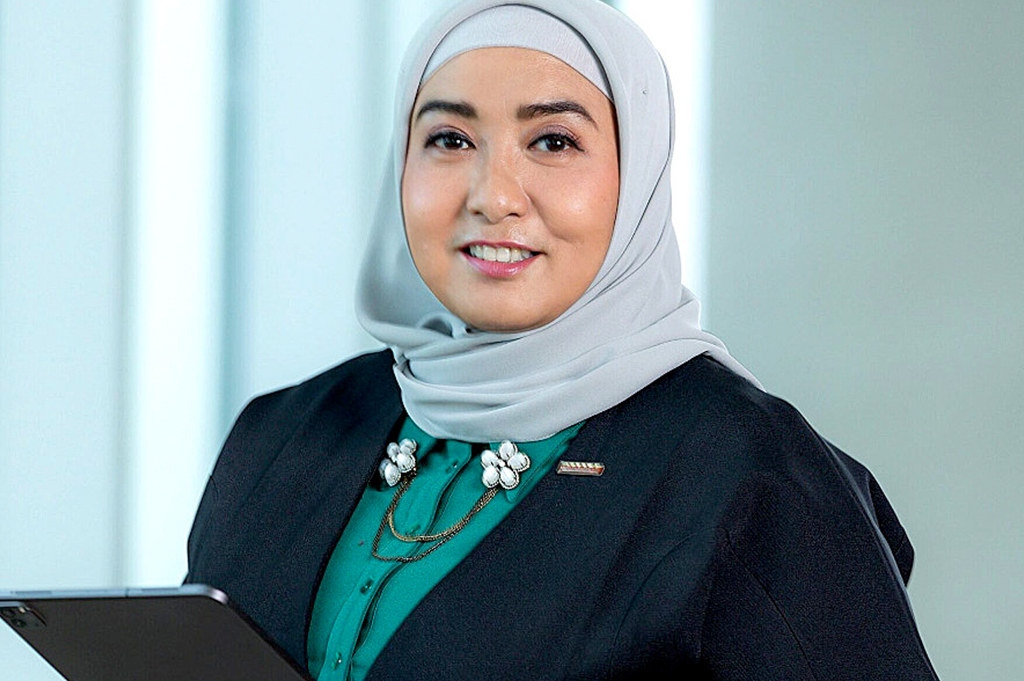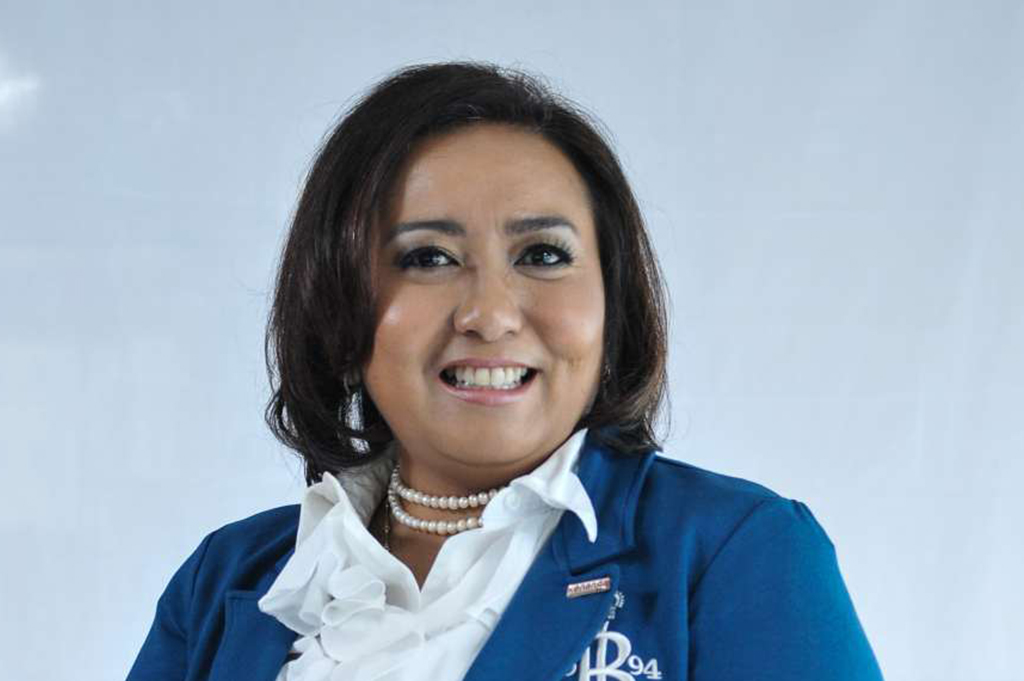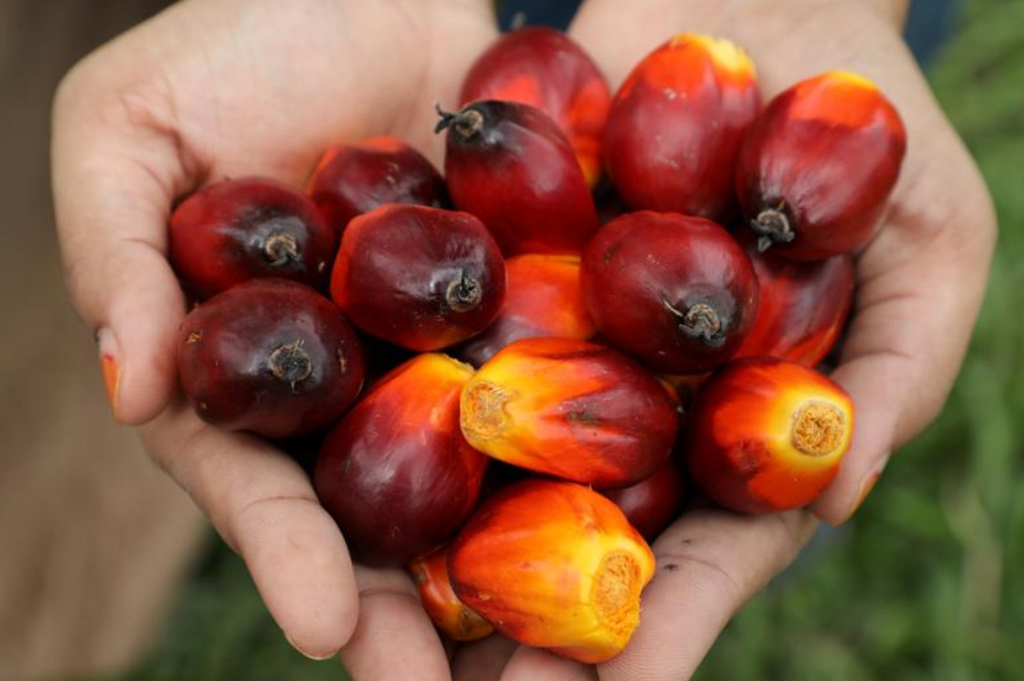IN CONVERSATION: The astonishing evolution of derivatives trading in Malaysia

APAC markets have surged in recent years: with swelling volumes supported by increasingly sophisticated product suites. BEST EXECUTION talks exclusively to Azila Abdul Aziz, CEO and head of listed derivatives at leading derivatives broker Kenanga Futures, about the exceptional growth of Malaysian derivatives over the past decade.
How does Malaysia’s derivatives offering compare to other comparable emerging market platforms?
The game changer for the entire markets landscape of Malaysian derivatives was in 2010 when all Bursa Malaysia Derivatives (BMD) listed products migrated and hosted onto the CME Globex Platform, located in Chicago. The move instantly created a common platform for global distribution and ease of access. Today, all BMD contracts are executed and matched on CME Globex, which has connectivity points across the globe including the US, Europe and Asia, before futures contacts are cleared onshore. The CME Globex trading platform also offers sufficient risk management tools embedded in the platform, which is a prominent feature compared to others. Futures players both global and domestic are connected to the respective locality and platform to trade. This direct market access is unique to Malaysian derivatives, and has had a significant impact on our market trading structure – which we think has created visibility for Malaysian derivatives worldwide. Electronic access capability has also expanded and that has resulted in efficiency in trade execution at an improved latency. Over a decade on, and BMD markets have seen growing liquidity alongside diversification and augmentation, with various types of players now participating in the derivatives market. In 2022 BMD marked a 10-year record high in volumes, a tad below 20 million contracts valued at notional US$519bn per annum – more than three times the size of where the market was prior to electronic access in 2010 (at 6 million contracts valued at notional US$151bn). Expectations are for further growth in futures volumes as the market has yet to reach its full potential. Malaysia might be ranked as Emerging Market, but from the standpoint of market access into Malaysian derivatives, it is already developed.
What role could/should derivatives play in developing trading volume and capturing overseas inflows?
When we talk about the securities market it is about capital formation and investment transfer. But when we talk about derivatives it is not for capital formation – it is for risk mitigation across a wide-range of business risks, including those related to capital formation. Derivatives enable the transfer of risk of variable and sometimes sudden moves in prices, such as in commodities, energy, foreign currency, securities markets and interest rates from those who cannot bear the risk to those that can.
To understand the role derivatives play in driving forward emerging markets/ASEAN trading activities would be to re-imagine how the derivatives market plays a part in the economy. If we look across ASEAN specifically, there are several listed bond futures on some of these derivatives exchanges – but unlike US Treasury futures listed on the CME Group, many of these products have yet to reach depth and desired liquidity. They are a long way from achieving the rule of thumb for success of a tradable / liquid futures contract, where futures turnover value should at least equal the turnover of its underlying market.
Specific to Malaysia, currently BMD offers three, five and 10-Year Malaysian government bonds (MGS) futures but these products remain inactive to date. As we know, movement in interest rates affects MGS prices. Today banks largely use interest rate swaps (IRS) which are an OTC derivatives instrument to hedge movements in interest rate. Statistics show that as of end-2020, the bond and Sukuk (Islamic bond) market in Malaysia was worth MYR2trn (notional US$417bn), of which more than half of the value was MGS and with 36% of MGS held by foreign investors. With a significant percentage of market share, there is a an urgent need for derivatives instruments for both domestic and global investors to use as a hedge for their exposure to MGS.
“There is a an urgent need for derivatives instruments for both domestic and global investors to use as a hedge for their exposure to government bonds.”
Discuss the development and expansion of listed derivatives products in Malaysia
Malaysia being one of the biggest producers and exporters of palm oil, it is only natural that BMD has over the years built its palm oil futures franchise into a global market centre for crude palm oil trading. From a growth perspective BMD is already successful, operating a liquid commodities futures contract that remains relevant and is still the ‘go-to’ exchange for players looking to lay off risk. Whether these players are hedging more or hedging less all depends on the supply and demand growth of the underlying commodity and also during periods of turbulence that provide both large risks and large opportunities. Then there is new demand due to the need for industrial use, as crude palm oil is increasingly being used as a ‘green’ additive to fossil fuels, which creates demand towards bio-fuel. Again, this is prompting the need to hedge against price volatility, resulting in an increase in trading activities on these commodity exchanges.
The main advantage of sponsored access into BMD is speed. Such ease of market access leverage on technology and attracts liquidity that resulted in diversification of client type. On BMD, there is a rising participation from high frequency trading (HFT) firms running quantitative-base arbitrage strategies and algorithms strategy similar to those developed for deep and active futures markets and greater sophistication to follow which helped add liquidity to the market. If you were to compare to the rest of other developed futures exchanges, typically HFT participation is > 60% of the market volumes. Malaysian statistics for this segment have caught up in line with other developed exchanges over the past several years amid volatility and a growing market.
If we were to make a comparison with products that are already offered on global listed derivatives exchanges, where offerings include equity index, interest rates, currencies and commodities – BMD markets (with the exception of the yet-to-be-launched currency futures contract) also offer diversity from a product offering standpoint. What can be improved further is to revive the liquidity of some of these inactive products by attracting and providing incentives to primary liquidity providers – which is an opportunity in a less crowded market.
Another topic gaining traction is that more and more long-only funds are moving towards responsible investing. Given the back drop, it is a natural progression for derivatives exchanges to move towards developing ESG futures contracts as a risk management tool to hedge out underlying price movements. BMD also recently launched its first ever FTSE4Good Futures contract which could appeal to players looking for alpha returns on responsible futures contracts.
“It is a natural progression for derivatives exchanges to move towards developing ESG futures contracts as a risk management tool to hedge out underlying price movements.”
Explain the evolution of the regulatory framework surrounding the derivatives market in Malaysia.
Malaysian regulators have endorsed the importance of foreign money/investments into the country. From an inside-out perspective, specific to trading in BMD-listed products, and there is no capital gains tax, free mobilization of funds to trade in futures. Notably, Malaysia is not an ID market where foreign investors have to register with a separate body and obtain endorsement before they can participate in the domestic market. It also enables give-up arrangements and expansion in position limits via omnibus account structure, to name but a few. From an outside-in perspective, the US Commodity Futures Trading Commission (CFTC) allows Malaysian futures brokers to paper directly with US customers for BMD products without needing to establish offices in the US. Additionally, CFTC has also granted approvals both for product and direct market access, respectively, which enables US-domiciled clients to trade into index futures contracts and also permits participants located in the US to enter trades via sponsored access directly into BMD on CME Globex. In terms of European regulations, Bursa Malaysia Derivatives Clearing (BMDC) has been recognised by the European Securities and Market Authority (‘ESMA) as a Tier 1 TC-CCP, which augurs well for member firms of BMD like Kenanga to provide clearing services to EU firms. On the local front, Bank Negara Malaysia (the central bank) has recognised BMDC as a Qualifying CCP, meaning that banking institutions under their purview attracts a lower capital charge. In a nutshell, evolution in these regulatory frameworks has encouraged foreign participation and provided a major boost in liquidity for BMD markets over the years.
How has electronic derivatives access for institutional and retail participation evolved?
The Malaysian derivatives market has been around for more than four decades: from floor trading to automation and today electronic access, but the progress towards expansion in electronic access capabilities has been even more rapid over the past 15 years. As a quick recap, back in the 1990s, prior to the Asian Financial Crisis, when foreign institutions accounted for >50% of the market, access to Malaysian derivatives was via voice. Global clients placed an order to buy or sell futures by calling the futures broker via telephone, which was inefficient from both a cost of trading and speed of transaction standpoint.
The exchange adopted open API in 2008, before all BMD-listed products migrated onto CME Globex Platform two years later. Direct market access was enabled, which resulted in efficiency of trade execution and connectivity at an improved latency. From 100% voice flows, Malaysian derivatives ratio of execution, electronic to voice, is now at 80:20. Electronic execution flows have expanded to include high touch, low touch and off late zero touch trade flows. Over the next three years we foresee increased breadth of execution in the electronic segment, albeit the ratio of electronic to voice to remain status quo. 20% voice execution is still a mainstay for FCM in Malaysia to support largely domestic and traditional buy-side corporate clients that prefer voice broking services for care orders.
Meanwhile for the retail market, the ratio of trading online to offline is at 90:10 as this segment by-and-large is familiar with online brokerage accounts and is more tech-savvy than previous generations. A decade ago, people outnumbered connected devices by about 10 to one. In 2014, mobile devices outnumbered people and in 2020, there were roughly 4 connected devices for every human being on earth. In Malaysia, mobile penetration rate is growing at a rapid pace and is among the highest in the region. According to a survey conducted by the Malaysian Communications and Multimedia Commission, 89% of Malaysians now access the internet via smartphones and out of that, 42% use it for financial activities. In 2020, BMD’s domestic retail segment market share grew to 30% and remains steady today – up from an average of 15% in previous years. This pattern of retail trading is not limited to Malaysia but is a global phenomenon.
What is your view on the utilisation of derivatives as risk management and hedging tools for corporations and financial institutions in Malaysia?
On BMD, domestic institutions account for less 20% of the market, and this is largely confined to commercial hedgers of the upstream and downstream of palm oil ecosystem. There is still work to be done for the larger percentage of domestic funds that have yet to secure mandates to use derivatives as a hedging tool. One recent example – in 2022 we saw futures curves in several commodities markets trading in super-backwardation, a structure that indicates traders are paying bumper premiums for immediate supply. We saw the same pattern on BMD crude palm oil futures where the spot month contract was squeezed to new uncharted highs north of RM8,000 per tonne from average price of RM4,700 levels per tonne. This led to heightened and exceptional market volatility, increased event risks and rising cost of capital. The global economic uncertainty and subsequent periods of turbulence are when derivatives trading becomes crucial for market participants to manage their risks, obtain price discovery and also optimise transaction costs. For Malaysian companies that are already deploying derivatives as a risk management tool, such scenarios are a true test of their risk management capabilities. It is unthinkable under such extreme market conditions should there be no futures markets and underlying positions are solely exposed to market prices and left un-hedged. For a futures market to be more vibrant it needs participation from both domestic and global segments.
What goals do you have for the future of derivatives trading in Malaysia, and over what timeline?
The glass is half full and that’s what we often tell our global clients when we do our rounds of engagement with prospects based in the US, UK and in Asia. The market is not crowded and with that, opportunities abound. Ease of access is mission-critical for global clients accessing Malaysia, and BMD has established that. It has been more than a decade now since the Globex hosting, and the market has attracted a diverse type of clients both buy and sell side – including high-frequency traders, hedge funds, global banks and proprietary trading firms, while commercial hedgers and the retail segment help to drive volumes on the exchange.
Malaysian derivatives market infrastructure must continue to support and appeal to new types of trading strategies in order to grow. We expect the current sponsored access on CME Group to remain status quo as it eliminates the need to support different market protocols. The cost of building out and supporting a connection to the BMD is eliminated, since the Globex platform allows participants to connect via established protocols. Also, any technology enhancements are effected through Globex, removing any technology headaches that could occur when managing connectivity to a local exchange supporting different technology protocols.
“Derivatives underpin the working of the entire Malaysian economy.”
If you were to project three years forward from now and apply a conservative average growth rate of 5% annually, by the end of 2026 we would expect BMD volumes to grow in excess of 23 million contacts. With that, Malaysia could improve its ranking among global derivatives exchanges. We would also expect expansion and revival of futures contracts within the fixed income, commodities and currencies asset classes. There should be more push for derivatives from niche to mainstream, because in summary, derivatives underpin the working of the entire Malaysian economy.
Original article appeared on Best Execution, 18 Aug 2023 here.


